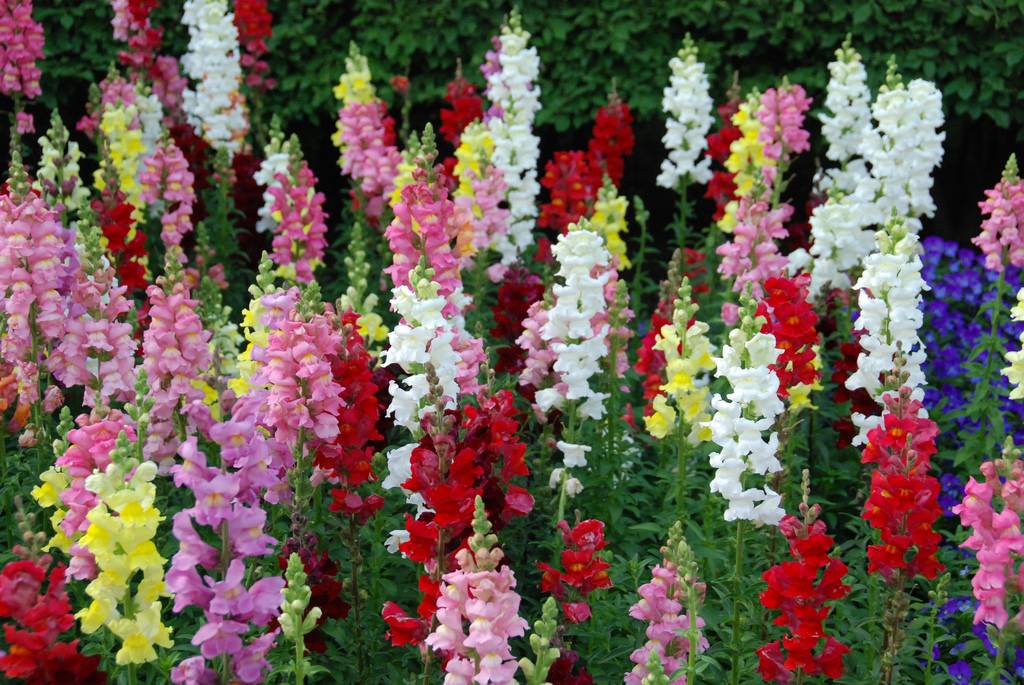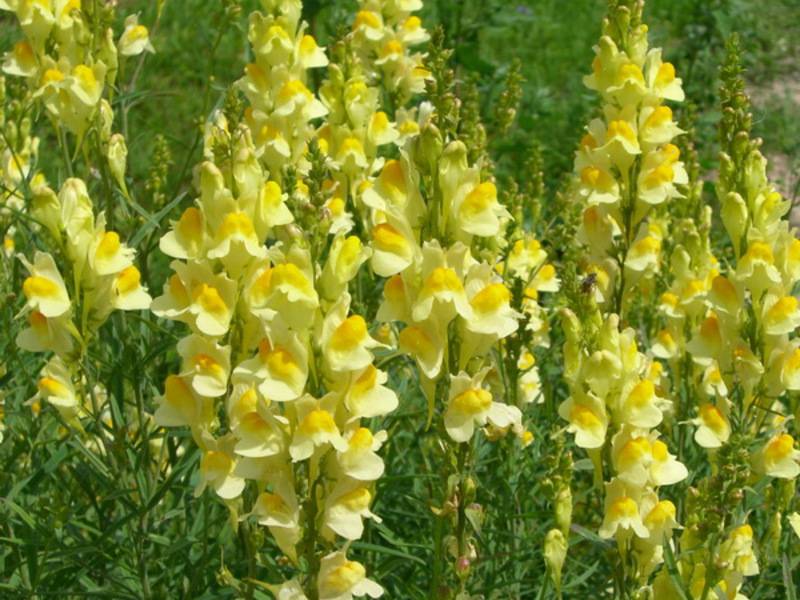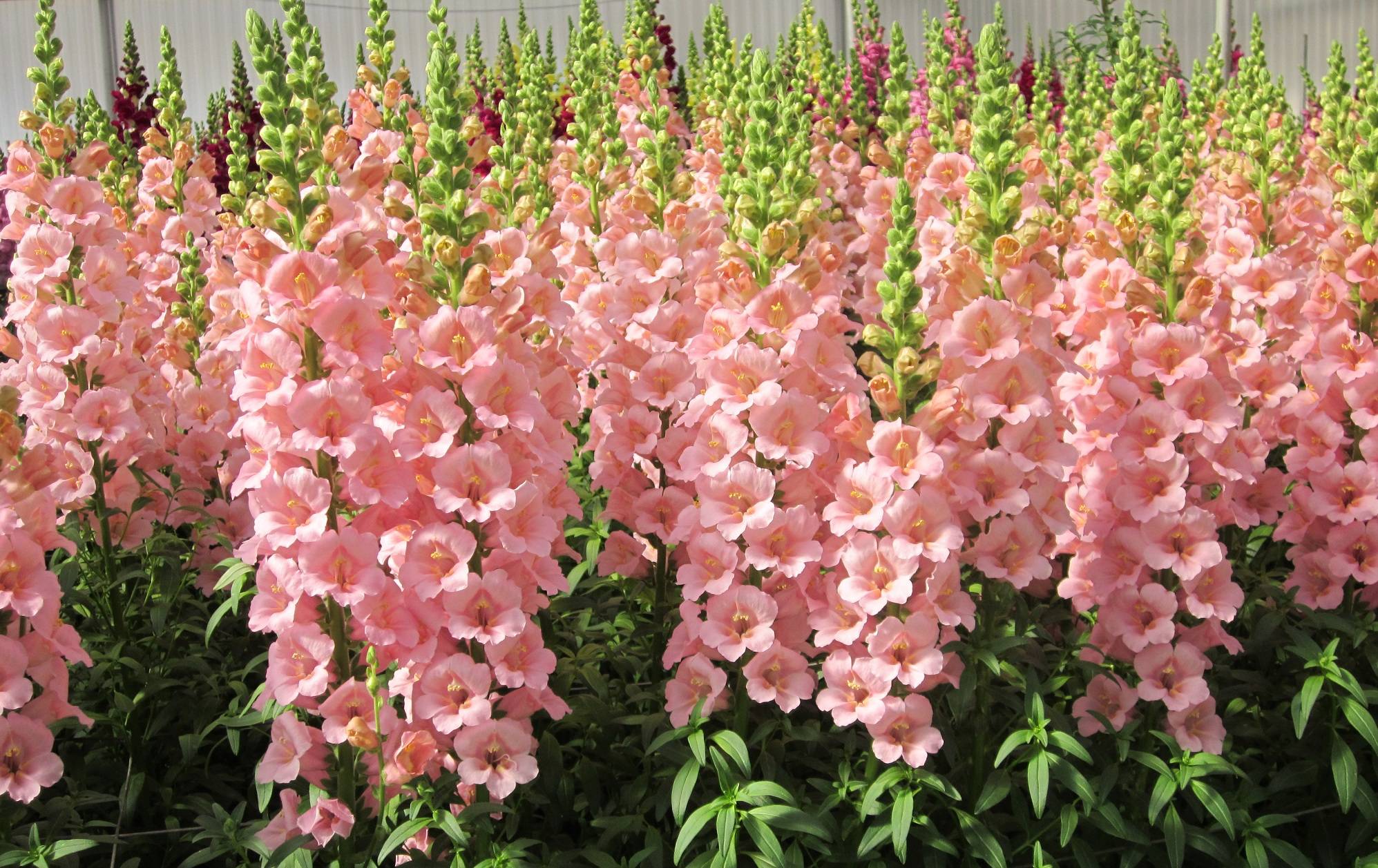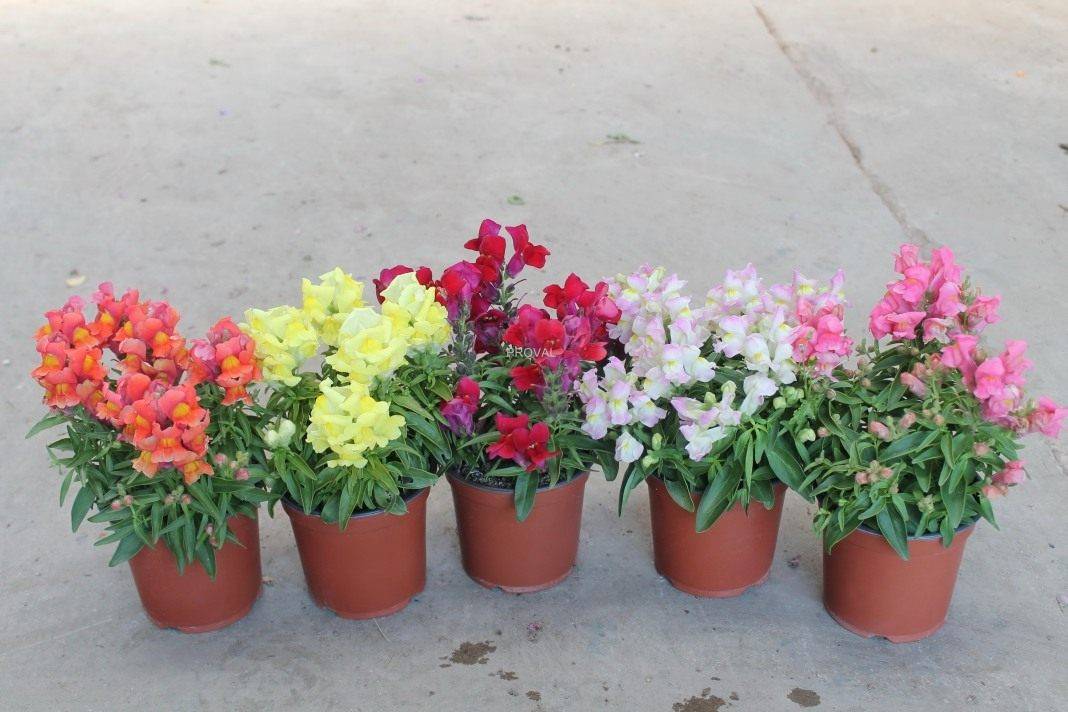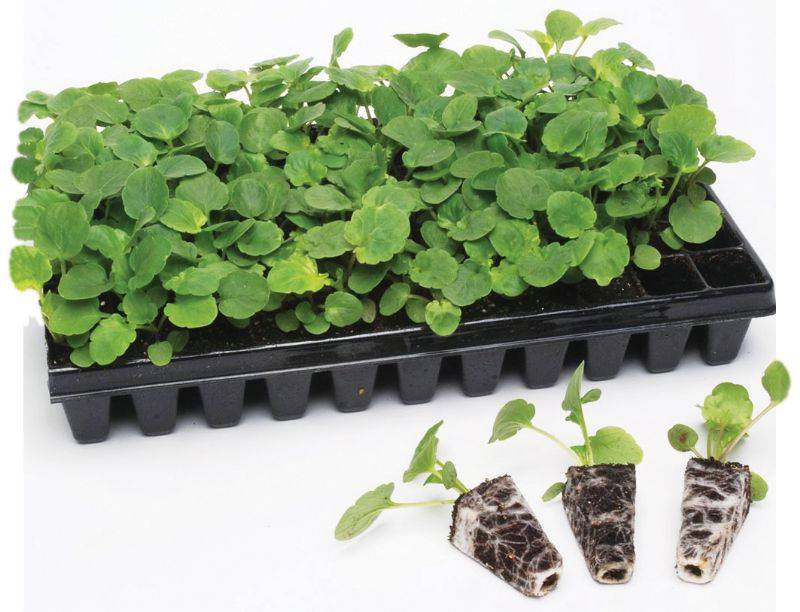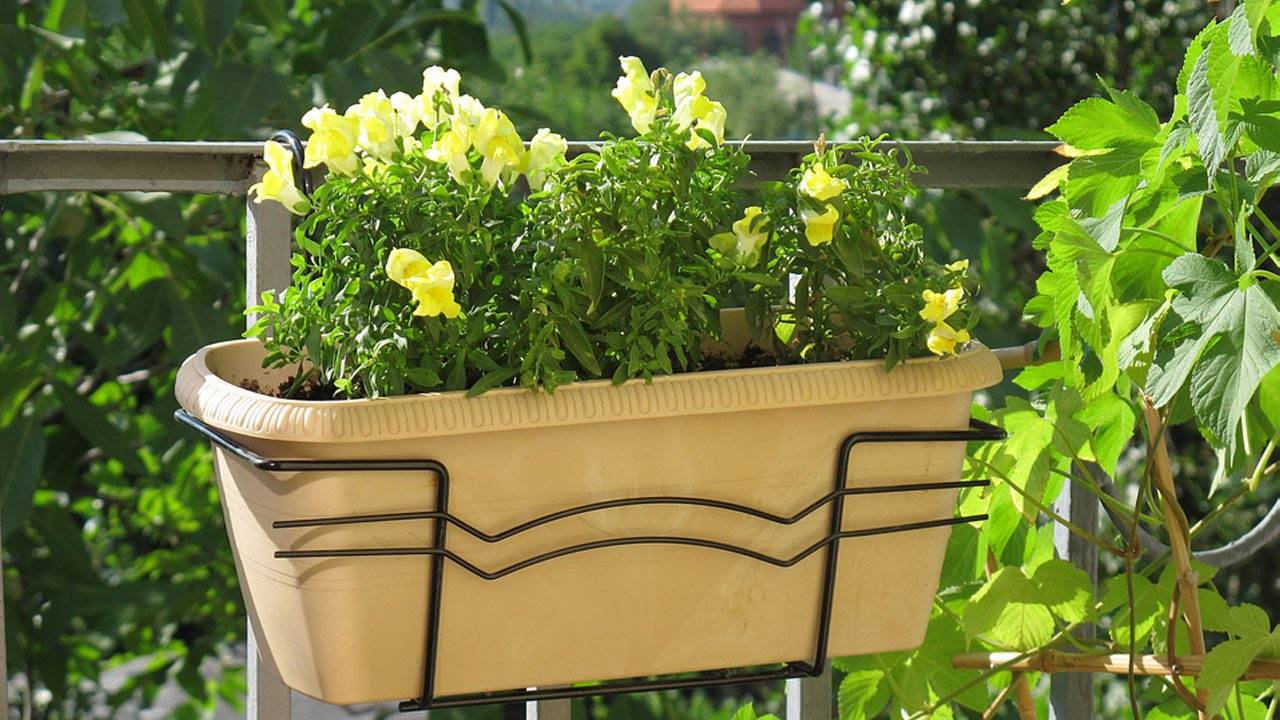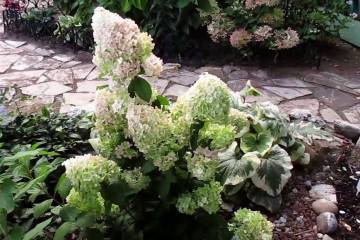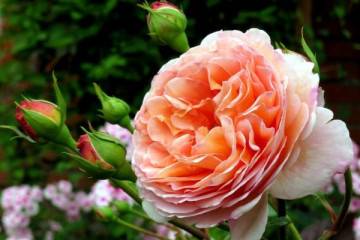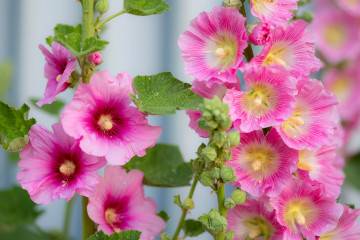Snapdragon - flower description, planting, disease
Content:
A plant with an unusual flower shape - snapdragon, has long attracted the attention of flower growers. The efforts of breeders have led to the emergence of a wide range of colors and a variety of flower sizes. Thanks to this, he became not only a decoration of fields and forests, but also took a worthy place in gardens, parks, on balconies and window sills.
Snapdragon: color description
Snapdragon is a perennial plant of the Plantain family. The botanical name antirrinum is associated with the shape of the flowers: translated from Greek it means "nasal". Due to their appearance, the flowers began to be called snapdragons (they resemble the mouth of an animal).
The genus has about 50 species that grow in the wild as perennials and grown as annuals in gardens.
Origin and appearance
The birthplace of snapdragon is North America, from where it was brought to the gardens of Russia and Europe.
Herbaceous or shrubby antirrinum have large green stems with grooves and lanceolate or elongated oval leaves. Closer to the inflorescence, the leaf plates grow in the next order, below - the opposite arrangement.
In the wild, there is a high (60 cm) Field snapdragon (or Common toadflax). It is widespread in the territories of Russia, where it grows like a weed along roads, in forests, in wastelands. Toadflax is a poisonous plant for pets.
Flowering features
Antirrinum bloom begins in May-August. The duration depends on the variety: from 50 to 150 days or longer. Based on the time of appearance of inflorescences, the varieties are divided into the following:
- early: flowering begins in May;
- medium terms: first flowers appear in July;
- late: inflorescences can be seen in early August.
Simple and double snapdragon flowers have a variegated color: yellow, pink, white, purple, red, orange, brown, burgundy, etc. (they are two-colored).
Depending on the variety, flowers are:
- two-lipped irregular shape: short petals form the "upper lip", long - "lower";
- symmetrical; open, tubular, consisting of 5 petals;
- tubular closed;
- two-flowered.
The spike-shaped inflorescence consists of 5-50 flowers, the size of which varies from 2.5 to 5 cm. In total, the plant can form 20-40 inflorescences.
Seed bolls appear on the stems, consisting of 2 nests. For 1 gr. there are 5-8 thousand seeds.
Snapdragon height
The height of the plants is 15-100 cm. Depending on the size, they are distinguished:
- Dwarf flowers (15-20 cm), popular as a potted plant for decorating terraces, loggias. They are planted in flower beds.
- Low bushes (20-35 cm) are compact. They are planted in flower beds, used as natural borders. There are ampelous varieties.
- Medium bushes (35-60 cm) are used in landscaping to create bouquets. Planted in the garden AND grown as hedges and curbs.
- High (60-80 cm) have a pyramidal shape, since the central stem is higher than the lateral shoots. Most often grown for cutting into bouquets.
- Giant ones (above 80 cm) are planted in flower beds, independently or in the vicinity of other flowers, for example, tulips.
Types and varieties of perennial snapdragons
The types that have gained popularity among flower growers include those described below.
Twiny
The compact plant grows no higher than 30 cm. It has semi-double double flowers. Recommended for growing in pots and small containers. Among the varieties of Twiny are:
- pinkish white Appleblossom,
- reddish orange Bronze shades,
- Peach Peach, Hot Pink Rose,
- white White,
- yellow Yellow shades.
There is also a mix on the market that includes seeds of various snapdragon flowers.
Floral showers
Terry variety, does not reach 20 cm. Suitable for planting in flowerpots and flower beds; characterized by a long flowering period: from June to October. Differs in a variety of colors (one-, two- and three-color).
Yellow
A popular variety of Flower Rain. A low-growing plant (15-20 cm), blooming until late autumn.
To create "carpet" flower beds, as well as growing in pots, use undersized snapdragon flowers of various colors: Rainbow, Floral and Sneppi.
Commonly purchased medium-sized varieties grown in flowerpots include:
- pink wild rose,
- bright yellow golden monarch,
- red crimson corduroy,
- burgundy red Red Chief
The latter is a flower 45 cm tall, decorated with burgundy-red velvety buds.
Among the tall representatives of snapdragons, flowers of different colors are known:
- Brazilian Carnival,
- burgundy corduroy gint,
- orange-yellow Volcano,
- snow-white grade Alaska,
- different shades of Madame Butterfly,
- California mix of colors.
A popular variety of ampelous snapdragons is the Lampion flower.
Planting the snapdragon outdoors
The cultivation of antirrinum is carried out with the help of seeds, seedlings and cuttings.
How to grow snapdragon flowers from seeds
In the southern part of Russia, it is allowed to plant seeds for the winter. Sowing is done at the end of November (after the freezing of the top layer of the earth). Each seed of snapdragon flowers is buried 0.5-1 cm into the soil and covered with a mixture of compost, peat and sand. 5 cm of dry foliage mulch is laid on top.
In the south, it is allowed to sow snapdragon seeds (low-growing varieties) in late May-early June.
Seeds for seedlings of tall varieties begin to be sown in containers at the end of February, medium-sized ones in March, and low-growing ones in April. Before placing in the soil for disinfection, they should be soaked for 30 minutes. in a manganese solution and dry on a napkin.
Snapdragon flower propagation technology by sowing seeds:
- The soil is prepared from earth, peat and sand in a ratio of 1: 2: 0.5.
- Wood ash is added to reduce acidity.
- The mixture is placed in containers with a drainage expanded clay layer and moistened.
- The seeds are scattered over the surface and covered with a 1 cm layer of the same substrate.
- The soil is sprayed from a spray bottle.
- The container is covered with a cap (film) and placed in a lighted place with a temperature of 21-25 g.
- Regular airing is carried out.
Seedlings appear in a week. After the seedlings reach 7 days of age, the cap is removed. Seedling maintenance requires moderate watering (excessive will lead to root rot). If there is a lack of sun, artificial lighting must be provided.
When 2 leaves appear, the seedlings dive. For this, individual peat pots with a minimum diameter of 8 cm are used. Alternatively, transplant into a common container. The distance around each flower should be at least 5 cm, after the 2nd pick - 10 cm.
Planting seedlings in open ground
Before planting on the site, the seedlings are hardened: the containers are taken out into the street for 30 minutes on the first day, increasing the time spent outdoors up to a day for 4 days.
How to transplant young snapdragon flowers (annual or perennial):
- Holes are dug at a distance of 45 cm for tall varieties and 20-30 cm for medium and short ones.
- The seedlings are placed in holes and covered with earth, which is compacted.
- Watering and mulching with peat, pine needles or cut grass is carried out.
Propagation by cuttings
Cutting technology:
- Cuttings are cut from the mother plant, which has wintered indoors, (just below the internode).
- Soaked for 2-3 hours in solution K
- Placed in water for 2-3 weeks.
- After the appearance of the roots, they are planted in open ground (or a pot).
Growing anti-rhinum on the site
After planting seedlings in open ground, the plant must provide conditions for growth:
- Watering correctly: infrequently, mainly during dry periods; Stop watering snapdragons during the rainy season.
- Loosen the ground to ensure breathability.
- Weed out weeds that take nutrients from flowers.
- Carry out a garter to the support. The rule applies to tall snapdragon flowers.
- Timely cut off wilted shoots, faded flowers and arrows, on which seed pods should form.
- Provide protection against disease. For rust, use fungicides, for septariosis - "Fundazol" or "Skor".
To prevent root rot caused by excess moisture, the plant should be treated with Hom. Dilute 5 ml in 1 liter of water and water the flowers in containers, and after transplanting - the soil on the site.
Optimal landing site
Antirrinum prefers sunny locations. In hot regions, it is necessary to create partial shade by planting, for example, next to hedges of tall bushes.
The soil should be fertile and loose, with a slightly alkaline composition. A plot for flowers is prepared in the fall, digging it up, adding humus, peat and mineral fertilizers.
Top dressing
In the process of growing a snapdragon, novice florists have questions about why the flowers turn pale, the foliage turns yellow and the inflorescences are poorly formed. These signs may indicate a lack of nutrients.
For top dressing, you can water the soil around the flowers with a urea solution (40 g of substance per bucket of water). During the budding period, the bushes are watered with phosphorus-potassium fertilizers: 20 g of potassium sulfate and superphosphate are dissolved in a bucket of water.
Topping
To ensure the splendor of the snapdragon flowers (both annual and perennial varieties), pinching is performed during the period when 4-5 leaves appear, stimulating the growth of lateral shoots.
Tricks of collecting seeds from snapdragon flowers at home
In place of faded flowers, seed pods with small black seeds appear. To obtain seed, you should choose healthy and robust plants. The inflorescences must be cut and removed to a room for ripening.
After the box turns a yellowish brown color, it should be rubbed over the paper (seeds will fall on it).After final drying, the seed in a paper bag is put into the refrigerator, where it can be stored for up to five years.
How to prepare antirrinum for winter
If the flower is grown as a perennial plant (which is possible only in the south of Russia), the stems should be pruned in October, leaving 5-8 cm. Then mulch with peat with sawdust and dry leaves.
If the snapdragon was planted as an annual, it should be dug up and burned. To prevent self-seeding, you should cut off the faded flowers.
If there is a desire to preserve the flower, it can be dug up and transplanted into a pot for further home maintenance.
Growing on the balcony
Bright and lush snapdragon flowers are a popular decoration for balconies and terraces.
Floral decor in containers
As a rule, undersized varieties (no more than 20 cm) with short wide flower clusters are grown on the balconies. Among the "balcony" antirrinums, the following varieties can be noted:
- Merry gnomes,
- Dwarf,
- Brazilian Carnival,
- Tom Tumb,
- Day and night.
Snapdragon in pots
No less common decor of loggias are ampelous flowers in pots with hanging shoots from 20 cm to a meter long. Hanging pots are used to grow varieties such as Lampion, Amulet, Candy Showers and Magic.
The sun-loving antirrinums should be located on the southern, northwestern and northeastern sides. The flowers will look brighter if phlox, forget-me-nots, marigolds, etc. are planted next to the snapdragon.
Sowing snapdragon seeds for pot cultivation
For potted flowers, seeds are sown in April. The technology is identical to planting seeds for growing seedlings, followed by planting in open ground.
The pick is carried out immediately into a permanent flowerpot. In the process of transplanting, the shoots and ends of the roots are pinched. Care must be taken to avoid excessive crowding of flowers. This can lead to fungal diseases.
Snapdragon is a bright and lush flower with an unusual shape. It can become a flower carpet in a park, a multi-colored high hedge, a compact balcony decoration or an element of a bouquet. Due to the variety of varieties and a wide range of colors, the flower does not lose its popularity among gardeners.
